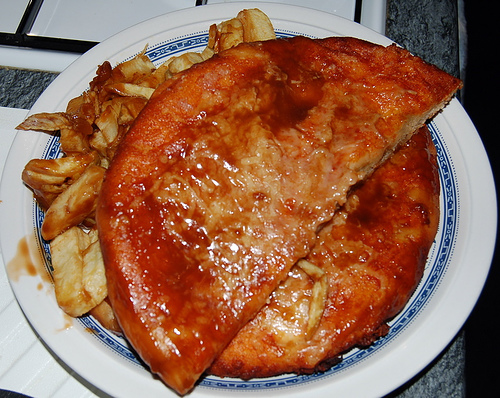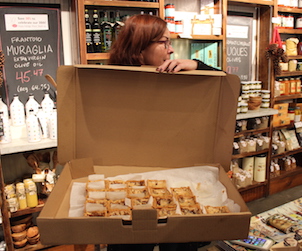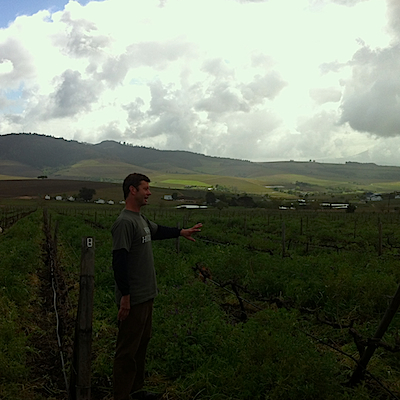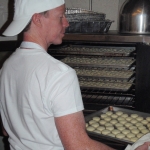By Teamy
With recipes by Georginia Hopkins (Zucca, London) and Sam Carswell (MacSorleys, Glasgow)
Ask anyone outwith the U.K. (or even within) what they think of when they hear the words “Scottish” and “Food” and you’ll probably get a reply that includes the words “Deep” and “Fried”. I can’t count the number of times that I’ve been introduced to someone and been asked “Is it true that you deep fry Mars Bars/Pizza in Scotland?” (For reasons I have yet to fathom why, this is particularly the case when I have been to New York.)
I suppose there’s a ying and yang to Scottish food; yes, we do deep fry just about anything, including confectionary but we also have the natural resources to produce some truly great dishes. The vast majority of the country, especially in the Highlands, is uninhabited and is home to countless types of game, the most famous of which are Roe deer, Rabbit and Grouse. The lowlands between Glasgow and Edinburgh and all the way down to the English border are arable, capable of producing a vast amount of fruit and vegetables. Finally, the rivers and seas all around the country are home to all manner of fish and shellfish including salmon which Scotland has become world-famous for.
When I think of Scottish food, I instantly think of the dishes my parents and particularly my grandparents would have cooked. Scottish cuisine is very thrifty which no doubt came in handy during the Second World War when rationing was introduced. To this day, I can’t wait for a roast dinner to be finished, so I can get all the bones into a pot and start making a stock for use in soup. Other foods such as the quintessential Scots dish, Haggis, use offal traditionally to ensure that nothing went to waste. Indeed, my Dad still says that the only part of a pig you can’t eat is the squeal.
Possibly due to this thriftiness and possibly due to the rather dreadful weather from October to roughly May, Scots food specialises in hearty, winter fare. Stews, soup, oats and potatoes figure highly in most traditional Scots recipes such as Mince and Tatties, Porridge and Stovies, the latter being a fantastically warming winter dish which I have never seen two recipes even remotely the same (roughly though it is a stewed dish potentially containing some or all of the following: Onions, Potatoes, Turnip (the Scottish word for Swede), Beef dripping, Sausage meat, Mince or other meat left over from the previous night’s meal.)
Scottish food has also had its fair share of outside influence, most notably from French, Italian and Indian/Pakistani cooking. Scotland’s ‘Auld Alliance’ with France meant that from the 14th century, French techniques regularly influenced Scots’ cooking particularly when Mary, Queen of Scots returned from France with French staff. The Scots words ashet (meaning large plate) and gigot (a cut of lamb) almost certainly come from French.
In the 20th Century there was vast migration to Scotland from Italy and Pakistan, bringing with it new cooking styles. For some reason both nationalities are almost synonymous in Scotland with takeaways: the Italians with Chippies and cafes selling ice cream and Pakistanis rather ironically with what we’d call Indian Curry Houses. The curry house staple Chicken Tikka Masala was first created in Glasgow and is now allegedly Britain’s Favourite Dish.
The local chippy is possibly now the home of Scotland’s nouvelle cuisine: Deep-Frying. At first chip shops sold Fish and Chips, pies and other quick foods but now you can almost literally get anything deep-fried. If I’m totally honest, my own guilty pleasure is deep-fried Half Pizza Crunch. To describe it often invite looks of revulsion but it really is delicious: the crispy batter, the lipid soaked dough, the melted cheese and salt and vinegar all combining to produce something special, if so unhealthy that it should come with a health warning stating that only one should be eaten a year.
That said, it seems a bit of a shame that this latter form of cooking along with processed ready meals have usurped the traditional meals in the last 50 or so years. I suppose all cultures have their own unhealthy foods.
Deep Fried Ice Cream
(By Georgina Hopkins, Zucca Restaurant, London)
The Scottish passion for deep fried comestibles is known the world over, but less well known, outside of Scotland at any rate, is the number of Italians who immigrated to Scotland in the latter half of the 19th and early 20th centuries. Many of whom set up cafes, chippies and ice cream parlours. The Glaswegians especially took ice cream to their hearts and there was an estimated 336 ice cream shops in the city by 1905. So in honour of these men and the Scottish love of all things deep fried I give you my recipe for vanilla ice cream, and instructions on how to deep fry it!
750ml double cream
175ml milk
2 vanilla pods
150g sugar
10 egg yolks
- Combine the cream and milk in a sauce pan, split the vanilla pods and scrape out the seeds and add the seeds and pods and all to the cream and milk, bring slowly to the boil.Beat the egg yolks and sugar, ideally with an electric whisk until the mixture is very pale and creamy and has bulked considerably in volume.
- When the cream has come to boil take off the heat and pour a third of it onto the egg yolks and sugar and whisk together. Pour this back into the saucepan.
- Put the saucepan back onto the heat and cook gently stirring all the while. You need to cook the custard until thickened, but do not allow it to boil, have a bowl over ice ready to pour your custard into once its ready to stop any further cooking.
- Allow to cool, and if you can chill your mixture overnight in the fridge. This is not essential but will give you a smoother ice cream.
- Churn your custard in an ice cream maker according to the manufacturer’s instructions or pour into a container and place in the freezer, taking it out every hour to whisk it, until frozen.
To make your deep fried ice cream you need:
Vanilla ice cream
Ready made filo pastry
Melted butter
Oil for deep frying
- Take one sheet of filo pastry and fold it over itself so you are working with a double thickness of pastry. Place one scoop of your ice cream in the centre of the sheet and fold over each side, one at a time, sealing with melted butter so that the ice cream is completely enclosed by pastry. Ensure there are no gaps and all of the edges are sealed.
- Continue with as many sheets of pastry and scoops of ice cream as you need. Place your parcels on a tray and place in the freezer. Leave for as long as possible, at least two hours to ensure the ice cream is as firm as possible.
- Heat your oil, in a deep fat fryer, or large pan to 190 degrees centigrade. (Or until a cube of bread, when dropped in, takes 40 seconds to brown)
- Lower your parcels into the oil, two at a time, and cook for 2 and a half minutes.
- Drain briefly on kitchen paper to absorb any excess oil and eat immediately.
Rillete of Salmon and Sopa Confit Salmon, Hoummos Ice Cream
(By Sam Carswell. MacSorley’s, Glasgow)
For rillette;
1 cucumber peeled
3 oz smoked salmon, minced
1 tbsp greek youghurt
1 teaspoon fresh dill, chopped
1 shallot, chopped
1 lemon, zested
1 tbsp extra virgin olive oil
1 pinch sumac
For smoked salmon;
1 20z piece centre cut salmo
1 tbsp extra virgin olive oil
pinch sea salt
For hoummos ice cream;
4 oz chick peas
3 floz water
50g light corn syrup
25g tahini
1 clove garlic, crushed
2 lemons, zested and juiced
50g greek yoghurt
salt to taste
liquid nitrogen as needed.
For rillette:
- Cut cucumber in 3″x ½” plank.
- Place in a vacuum bag and cryovac until cucumber is translucent.
- Remove cucumber from bag and season with sumac, olive oil and salt.
- Mix remaining ingredients into a paste.
- Spread the mix on half of the cucumber plank.
For smoked salmon:
- Place all the ingredients in a vacuum bag.
- Seal and cook in a water bath at 52c for 12 minutes.
- Open the bag and smoke the ingredients with a smoking gun.
For hoummos ice cream:
- Blend all ingredients until smooth.
- Transfer to mixing bowl and on low and slowly pour in the liquid nitrogen until frozen.
- Mould into desired shape.
To serve:
- Make a small pool of olive oil on the plate.
- Place cucumber plank with salmon spread on top of oil.
- Arrange smoked salmon piece on the other side of the cucumber plank.
- Top salmon spread with hoummos ice cream.
- Garnish with a pluche of dill and chickpea cake or pitta bread.
Georgina Hopkins is an honorary Glaswegian and now chefs at the London restaurant, Zucca, recently nominated for best newcomer by Time Out London and placed 60th in the British National Restaurant Awards above Ramsey’s at Claridges and Le Gavroche.
Sam Carswell is the award winning chef at MacSorley’s in Glasgow, Scotland.
 Teamy is a Glasgow-based DJ and bon vivant whose second passion after records is food, especially all things spicy, a trait he attributes to his father, who makes the best chili sauce in the world and his ex-girlfriend who always makes things too hot.
Teamy is a Glasgow-based DJ and bon vivant whose second passion after records is food, especially all things spicy, a trait he attributes to his father, who makes the best chili sauce in the world and his ex-girlfriend who always makes things too hot.








